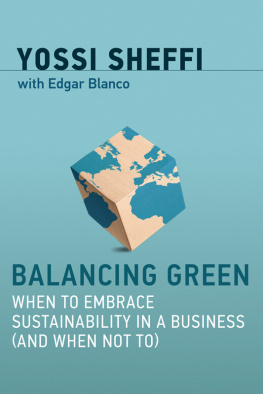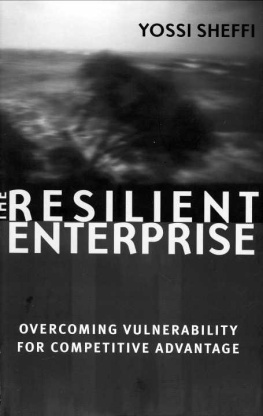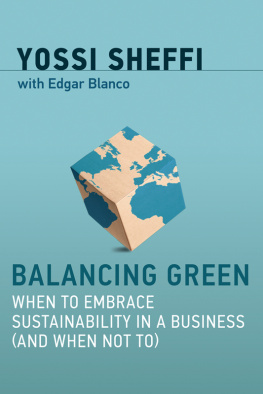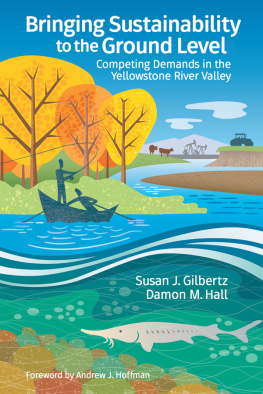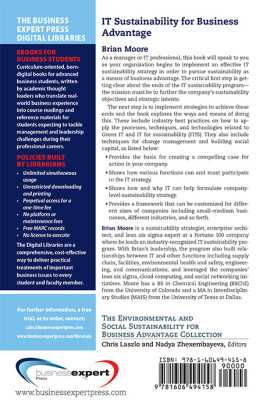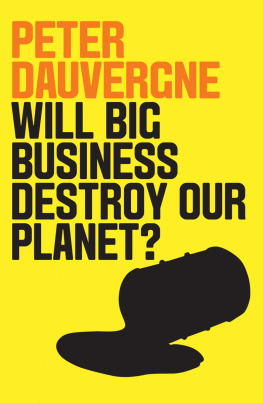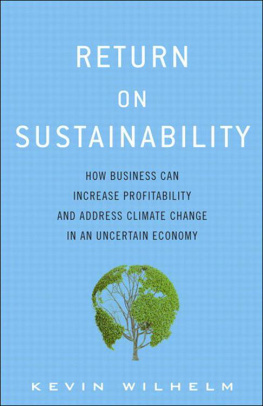Balancing Green
When to Embrace Sustainability in a Business (and When Not To)
Yossi Sheffi
With Edgar Blanco
The MIT Press
Cambridge, Massachusetts
London, England
2018 Massachusetts Institute of Technology
All rights reserved. No part of this book may be reproduced in any form by any electronic or mechanical means (including photocopying, recording, or information storage and retrieval) without permission in writing from the publisher.
This book was set in 10 on 14 pt Helvetica condensed and Sabon by Toppan Best-set Premedia Limited Printed and bound in the United States of America.
Library of Congress Cataloging-in-Publication Data is available.
ISBN: 978-0-262-03772-3
eISBN: 9780262345743
ePub Version 1.0
Preface
In this book, I offer a pragmatic take on whether, how, why, and to what extent businesses of all sizes are addressing environmental sustainability. Like my previous books, this one has its origins in extensive interviews with hundreds of executives at dozens of companies. The goal was not to argue for or against sustainability but to understand what, if anything, these executives were doing in this realm. The many examples in this book were selected to illustrate the diverse challenges, solutions, and implications of sustainability as a potential business goal, competing with the many other business goals that managers face. Rather than prescribe a specific course action, these examples enable business managers to draw their own conclusions about what might or might not work in their specific context and how far it makes sense to go.
This book takes an entirely agnostic view on the science of climate change because it may be irrelevant whether business executives either personally embrace environmentalists arguments about the challenge of our time or if they believe it is a hoax. Companies, as entities that connect supply and demand around the world, have many stakeholders in the communities in which they operate who are interested in corporate profits, jobs, business growth, and sustainability. The business merits of sustainability are based on the fact that even the most ardent climate change skeptics in the C-suite face natural resource costs, public relations problems, regulatory burdens, and a green consumer segment. Thus, this book presents three main business rationalescutting costs, reducing risk, and achieving growthfor corporate sustainability efforts. These three rationales underpin companies struggles to bridge the gap between the conflicting constraints imposed and desires expressed by customers, competitors, employees, neighbors, investors, activists, local governments, and regulators.
The intention of this book is to describe and illustrate many of the choices companies face; their efforts up and down the supply chain; the tools they use to assess the impact of those efforts, both environmental and financial; and the multifaceted conflicts and collaborations between companies, NGOs, and government agencies. All these choices have to be taken in the context of other company objectives such as profits, product and service quality, risk management, and others. The book explores effective initiatives as well as wasteful ones, and it highlights the difficulties of accounting for the full life cycle of products and processes throughout the entire supply chain from cradle to grave.
More than any of my previous books, this book's gestation has been long and arduous, owing to several deep gaps uncovered by this research. Our research team found that a multitude of companies claimed to pursue a variety of sustainability initiatives. Of course, when an MIT team interviews executives at a company, few would simply admit something such as, We really don't carewe just do the minimum that our customers or regulators demandand we put out some blurb to fend off NGOs. We did, however, hear some frank opinions expressed, including one from a chief supply chain officer at a leading manufacturer, who declared, We will do what customers demand and no more. Interestingly, two years later, that same executive asked us not to use this quote in the book, because the company was starting to change its stance. Another team of executives at a different company stated categorically, If it reduces costs we will do it, otherwise we will not.
The long gestation process of this book allowed us to observe that more and more (yet by no means all) companies were starting to pay attention to environmental sustainability and do something to promote it. They were committing to, and often achieving, specific environmental impact reduction goals through myriad initiatives that targeted all phases of the product life cycle. These actions were carefully analyzed and constitute the majority of this book's discussion on how companies implement sustainable practices.
At the same time, environmental journalists and NGOs were decrying the many remaining examples of pollution, habitat loss, and rising CO2 levels. Although it is easy to vilify companies as icons of cold-hearted capitalism, the picture is very different when one walks in the shoes of corporate executives. Keeping a company alive and growing is not simply a matter of satisfying Wall Street demands for profits. A successful company delivers something that its customers want or need while providing employment and supporting entire communities. For example, Walmartthe oft-criticized corporate behemothdirectly employs more than two million people and indirectly supports millions more. Its efficiency means that it can sell at everyday low prices to the one-third of the US population that visits its stores every week, and to the many more who make purchases online. The company single-handedly effected improvements in the sustainability of many products on a national scale. What was harder to understand was why companies pursued sustainability in the way they did.
The gap between companies bright press releases that celebrate environmental stewardship and environmentalists dark forecasts of planetary doom reflects a more complex reality. Sustainability is intimately connected with supplychains, the complex economic structures formed by companies that are using the global supply of natural resources to meet worldwide consumer demand.
The causes of this gap begin on the consumer side. Although a number of surveys show that most consumers say they want sustainable products, sales data show that only a small percentage are actually willing to pay more to buy sustainable products. This gap between say and pay puts companies in a difficult position. The position is made even more challenging by activists, journalists, and regulators who also demand (or command) sustainability from companies and attempt to punish transgressors.
The supply side exacerbates this gap. Most companies operate within the broad chasm between the environmental sensibilities of Western consumers and the economic priorities of developing countries that supply much of the natural, mineral, and energy resources consumed in the developed world. In the developing world (and in much of the Western world as well), the emphasis is on livelihood and economics rather than sustainability. Companies routinely violate their own country's laws, sometimes with the implicit understanding of the authorities, in the name of providing jobs. Thus, companies face seemingly incompatible requirements when accounting for sustainability, costs, and jobs. Most of the case studies in this book illustrate how companies are trying to navigate among these constraints and demands.
This book does not specifically address the social impacts of supply chains, such as child labor, fair pay, community welfare, or social justice issues. Nonetheless, many of the rationales and tools for addressing environmental challenges in supply chains carry over to social concerns as well. Many companies bundle their environmental and social initiatives under the general heading of corporate social responsibility or a broader definition of sustainability.

